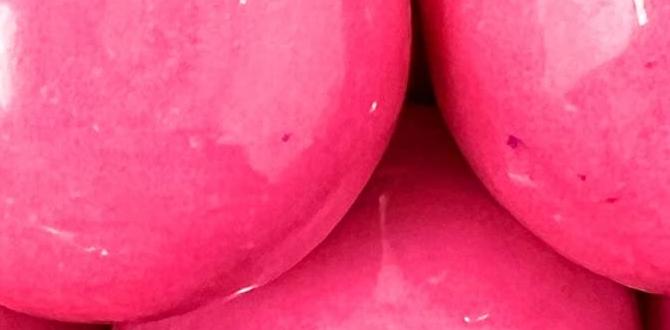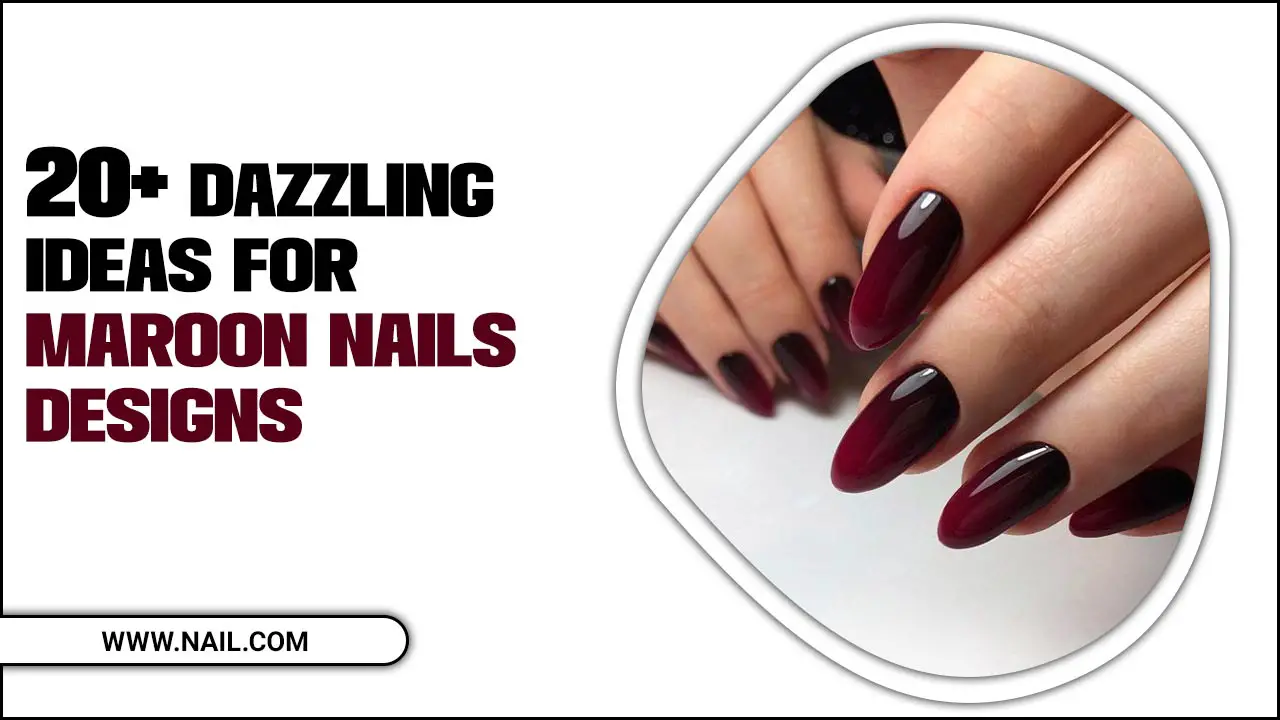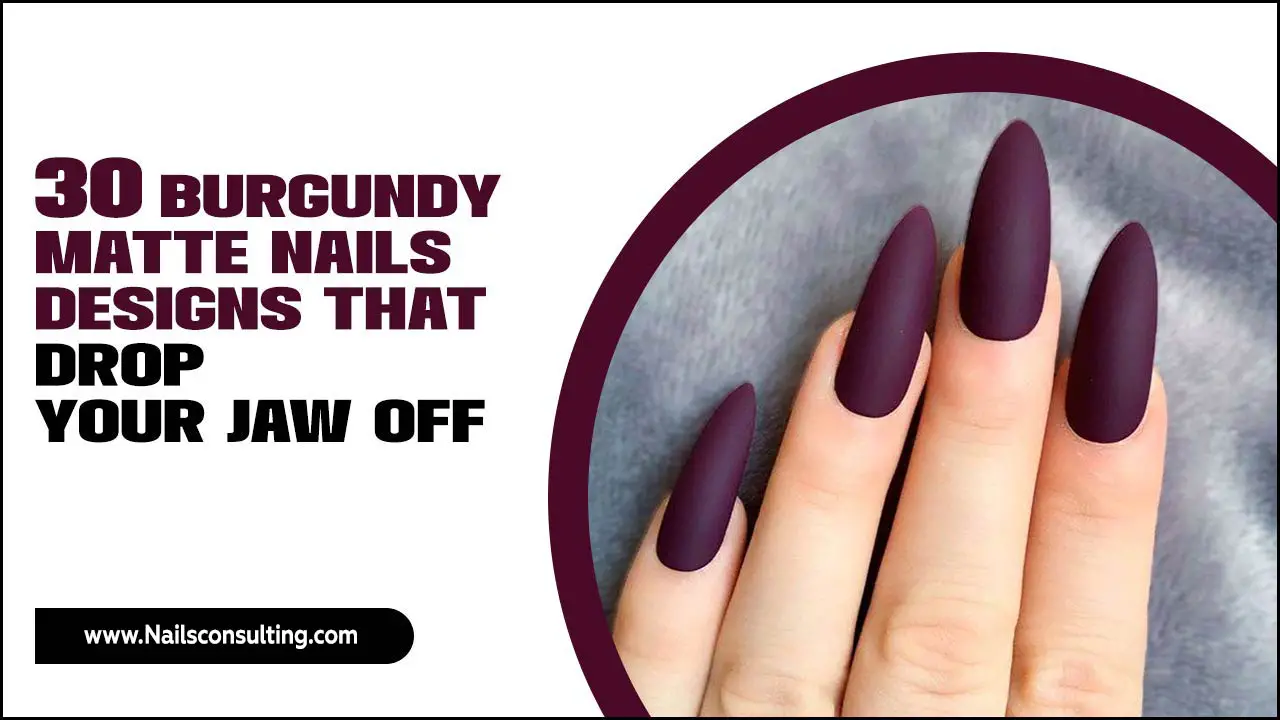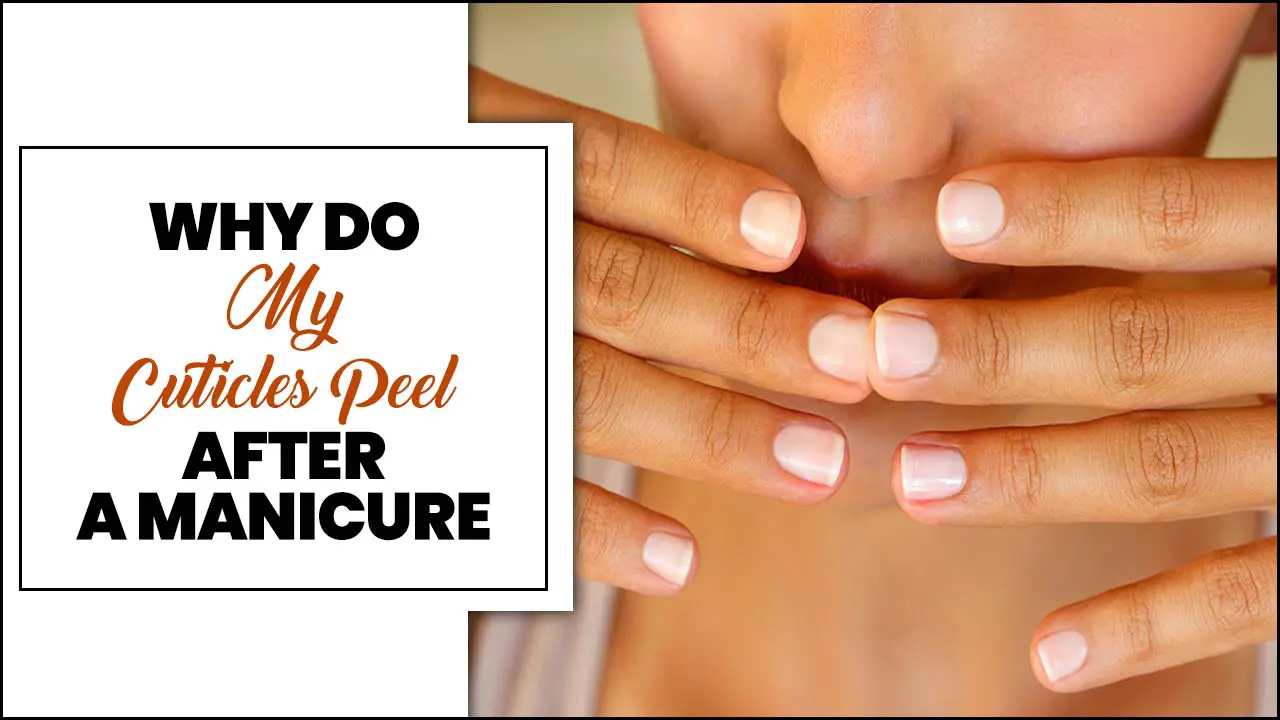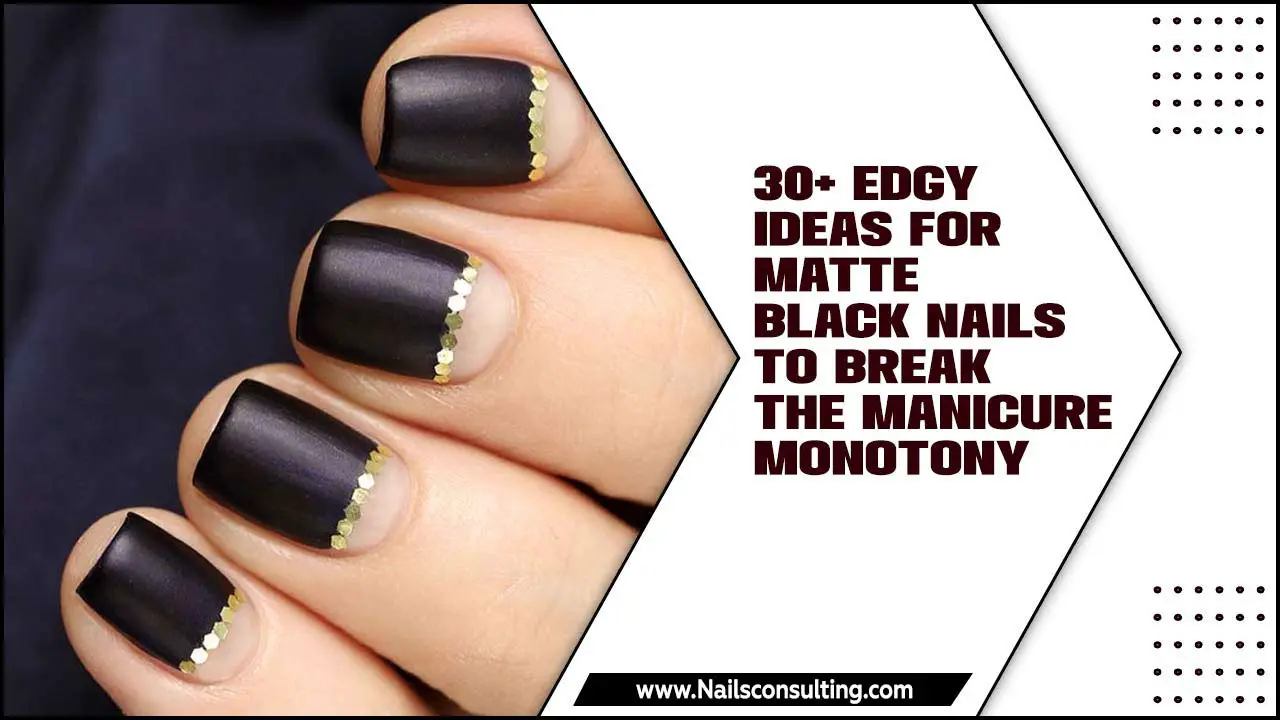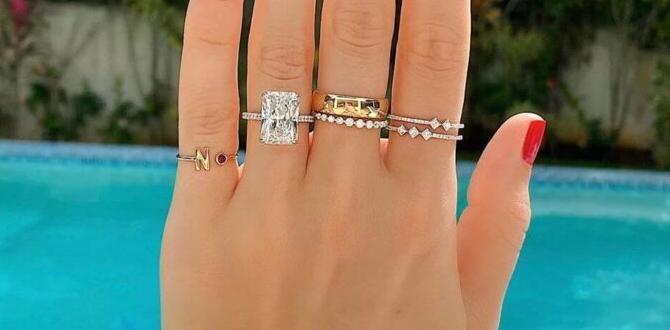Tortoiseshell nail designs are a chic, timeless look that adds natural, warm elegance to any manicure. Easy for beginners to achieve with simple techniques, these stunning patterns mimic the beautiful, swirling colors of a tortoise shell, offering a sophisticated and unique statement for your nails.
Ever looked at those gorgeous, warm-toned swirling patterns on nails and thought, “Wow, I wish I could do that”? Those are tortoiseshell nails, and they’re incredibly popular for a reason! They bring a touch of natural artistry and a cozy, sophisticated vibe to your fingertips. But maybe you’ve felt a bit intimidated, thinking it’s too complicated for a DIY project. Don’t worry! We’re going to break down exactly how to create these stunning tortoiseshell nail designs, step-by-step. It’s easier than you think, and the results are absolutely show-stopping. Get ready to unleash your inner nail artist!
What Exactly Are Tortoiseshell Nail Designs?
Tortoiseshell nail designs are inspired by the natural, distinctive patterns found on the shells of tortoises. Think rich caramels, deep browns, glowing ambers, and sometimes pops of black or cream swirled together. This unique marbling effect creates a look that’s both earthy and luxurious, making it a favorite for those who love a blend of classic elegance and a touch of nature-inspired beauty.
Why You Need Tortoiseshell Nails In Your Life
These designs aren’t just pretty; they’re incredibly versatile and have a lot going for them:
- Timeless Appeal: Tortoiseshell patterns have been a fashion staple for decades, from accessories to home decor. They never really go out of style!
- Sophisticated & Chic: The earthy color palette and swirled texture lend an air of understated luxury and sophistication.
- Works with Many Styles: Whether you’re into minimalist chic, bohemian vibes, or classic elegance, tortoiseshell nails can complement your look.
- Seasonally Versatile: While perfect for autumn, the warm tones also transition beautifully into spring and summer for a unique twist.
- Relatively Easy to DIY: With a few basic tools and techniques, you can achieve a professional-looking result right at home.
Essential Tools for Your Tortoiseshell Manicure
Before we dive into the how-to, let’s gather your battle gear! You don’t need a whole lot, and most of these are standard nail art supplies.
The Core Components
- Base Coat: To protect your natural nails and help polish adhere.
- Base Color Polish: Typically a creamy white, ivory, or light nude. This is the canvas for your design.
- Tortoiseshell Color Polishes: You’ll need at least three shades:
- A deep brown (like a chocolate or espresso)
- A warm amber or golden yellow
- A lighter caramel or tan
- Optional: Black for deeper accents, and cream/off-white for highlights.
- Top Coat: For shine and protection.
The Application Tools
- Thin Nail Art Brush: A fine-tipped brush is crucial for creating those delicate swirls and lines. Look for one with flexible bristles.
- Small Mixing Palette or Piece of Foil: To drop small amounts of your tortoiseshell colors onto for easy dipping with your brush.
- Clean-up Brush: An angled, flat brush dipped in nail polish remover to neaten up edges and clean any mistakes outside your nail line.
- Nail Polish Remover: For cleaning up with your clean-up brush.
- Cuticle Oil (Optional but Recommended): To rehydrate your skin after polishing.
Pro Tip for Beginners
If you’re just starting out, consider using gel polishes for this design. They tend to be a bit more forgiving and allow you to “play” with the colors for a moment before curing, making it easier to blend and create swirls. Plus, the mirror-like finish they provide is fabulous! You’ll need a UV/LED nail lamp for curing gel polishes.
Step-by-Step Guide to DIY Tortoiseshell Nails
Ready to create some magic? Follow these simple steps for gorgeous tortoiseshell nails.
Step 1: Prep Your Nails
Start with clean, dry nails. Push back your cuticles, and lightly buff the surface if needed. Apply a thin layer of your base coat and let it dry completely. This is the foundation for a flawless finish.
Step 2: Apply the Base Color
Paint your nails with your chosen base color. A creamy white, ivory, or light nude works best as it allows the tortoiseshell colors to pop. Apply one or two thin coats, letting each dry completely. This neutral shade will be the backdrop for your tortoiseshell pattern.
Step 3: Prepare Your Tortoiseshell Colors
On your foil or palette, place a small dot of each of your tortoiseshell polishes (brown, amber, caramel). You can add a tiny dot of black or cream here too, if you’re using them.
Step 4: Start the Marbling Action
Dip your clean, thin nail art brush into the deepest color (usually the brown). Gently touch it to your nail base – don’t press hard. Then, dip the same brush (no need to clean it yet) into the next color (amber or caramel) and touch it next to the brown. Repeat with the other colors, creating random splotches and lines. The key here is not to overwork it! You want distinct patches of color that aren’t fully blended yet.
Step 5: Create the Swirls
Now, using the tip of your brush, gently drag and swirl the colors together. Imagine you’re pulling wisps of paint into each other. Don’t blend them into a uniform color; you want to maintain those distinct color areas. Think about the natural flow of a tortoiseshell pattern. You might add a few fine black lines for depth or tiny white/cream specs for highlights sparingly.
Step 6: Clean Up Edges
Dip your clean-up brush into nail polish remover. Carefully go around the edges of your nail to remove any polish that has gotten onto your skin or cuticles. This step makes a huge difference in making your manicure look professional!
Step 7: Apply Top Coat
Once you are completely happy with your design and it has had a moment to set slightly (or cure, if using gel), apply a generous layer of clear top coat. This seals the design, adds shine, and protects your beautiful tortoiseshell art. Make sure to cap the free edge of your nail to prevent chipping. Let it dry completely.
Variations on the Tortoiseshell Theme
Once you’ve mastered the basic technique, feel free to experiment! Here are some ideas:
- Color Play: Instead of browns and ambers, try blues and greens for a teal tortoise look, or pinks and purples for a more vibrant, abstract shell.
- Matte Finish: Swap your glossy top coat for a matte one for a sophisticated, velvety texture.
- Accent Nails: Apply the full tortoiseshell design to just one or two accent nails and keep the others a solid color that complements the design.
- French Tips: Create a tortoiseshell French tip by applying the marbling effect only to the tips of your nails.
- Half-Moon Designs: Apply the tortoiseshell pattern to the cuticle area or as a bold half-moon.
Achieving That Perfect Tortoiseshell Texture
The secret to a realistic tortoiseshell look lies in the blending and color choices. Here’s a breakdown of what makes it work:
| Element | Impact | Tips for Success |
|---|---|---|
| Color Palette | Mimics natural shell patterns; sets the mood. | Use 3-4 warm, complementary shades (e.g., deep brown, ochre, caramel, black, cream). Ensure good contrast between colors. |
| Swooping Technique | Creates organic, flowing lines. | Use a fine brush to gently drag colors into each other, forming wisps and curves. Don’t over-blend; keep distinct color patches visible. |
| Layering Depth | Adds realism and dimension. | Start with darker colors and add lighter ones. Incorporate tiny black or white accents for a more authentic, multi-dimensional look. |
| Base Color Choice | Provides a canvas that makes other colors stand out. | Creamy whites, ivories, or very pale nudes work best. They offer enough contrast without overpowering the tortoiseshell pattern. |
Troubleshooting Common Issues
Even the best nail artists run into a snag now and then! Here’s how to fix common tortoiseshell nail problems:
- Problem: My pattern looks muddy or over-blended.
Solution: You’ve likely swirled the colors too much. For next time, use less pressure and blend for a shorter time. If it’s already applied, you might need to wipe it off and start again, or carefully try to add a thin dark line (like black) over the blended area to add definition back. - Problem: The colors aren’t distinct enough.
Solution: Ensure your base color is opaque and dry. When applying the tortoiseshell colors, place them as distinct blobs or streaks rather than already blended. Use a very light hand when swirling. - Problem: My lines are too thick or clunky.
Solution: Your brush might have too much polish on it, or you might be pressing too hard. Try using just the very tip of your brush and holding it more parallel to the nail. You can also clean your brush slightly on a paper towel before applying to the nail. - Problem: It doesn’t look “natural” enough.
Solution: Look at reference photos of real tortoiseshell patterns! Study how the colors flow and blend. Try to replicate those organic curves and color breaks. Adding those tiny black or cream accents can really enhance the natural look.
Resources for Better Nail Art
Want to improve your nail art skills overall? Check out resources like the National Association of Nail Technicians for professional standards and best practices, or explore general beauty education sites where you can find tips on brush control and color theory.
Frequently Asked Questions About Tortoiseshell Nails
Q1: Are tortoiseshell nails hard to do for beginners?
A1: Not at all! While they look intricate, the technique involves simple swirling. With a little practice, beginners can totally master them. Patience is key!
Q2: What colors are best for tortoiseshell designs?
A2: Traditionally, warm earthy tones like deep brown, amber, gold, caramel, and black are used. However, feel free to experiment with blues, greens, or even pinks for a modern twist!
Q3: Do I need special polish for tortoiseshell nails?
A3: No! You can achieve this look with regular nail polish. Gel polish can offer a bit more control and a longer-lasting finish if you have a UV/LED lamp.
Q4: How long do tortoiseshell nails usually last?
A4: With a good base and top coat, and proper application, your tortoiseshell manicure can last anywhere from 7-14 days, depending on your nail type and how you care for them.
Q5: Can I use a dotting tool instead of a brush?
A5: A thin nail art brush is generally better for creating the swirled effect. A dotting tool is great for creating dots, but less ideal for fluid lines. You could potentially use a fine dotting tool to place the colors and then gently swirl with a clean brush.
Q6: How do I clean up mistakes while doing the design?
A6: It’s easiest to clean up mistakes before applying the top coat. Use an angled brush dipped in nail polish remover to carefully trace around your cuticle and nail edge, removing any stray polish.
Q7: Can I make the pattern more intricate?
A7: Absolutely! Once you’re comfortable, you can add fine black or cream lines for more depth and texture, or even incorporate glitter accents for a glamorous touch.
Conclusion: Embrace Your Inner Artist
Tortoiseshell nail designs are a fantastic way to elevate your manicure game. They offer a sophisticated, earthy elegance that’s surprisingly achievable right in your own home. By following these simple steps, gathering the right tools, and practicing a bit of patience, you can create stunning, one-of-a-kind patterns that are sure to turn heads. Don’t be afraid to play with color, experiment with your brush strokes, and most importantly, have fun expressing yourself through your nails. This timeless design is a perfect testament to how beautiful nature’s patterns can be, and how you can wear them with pride!

